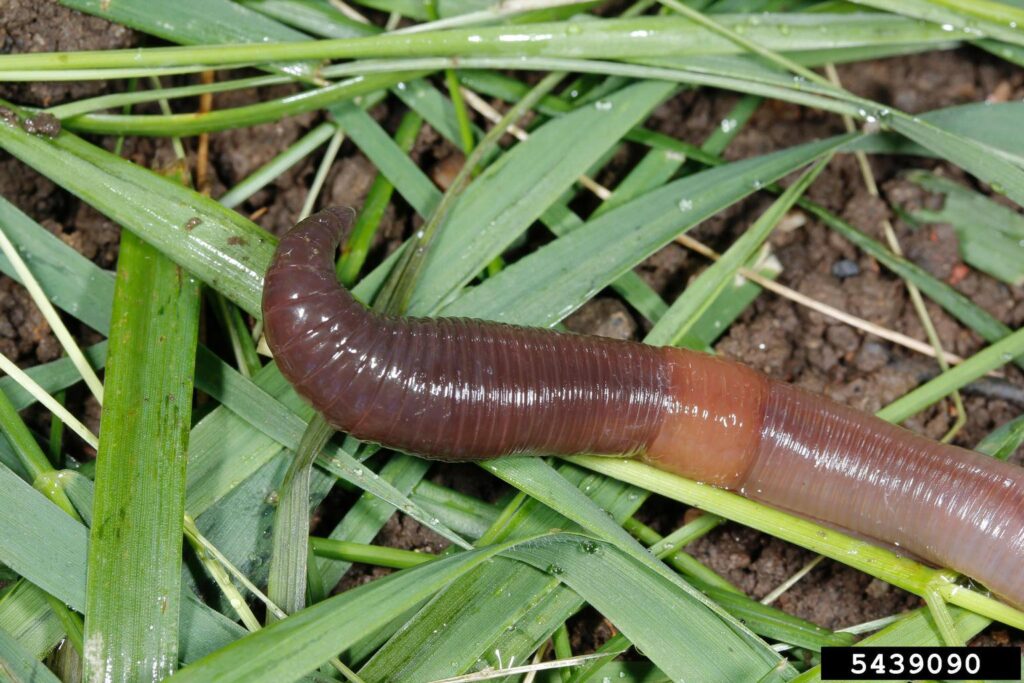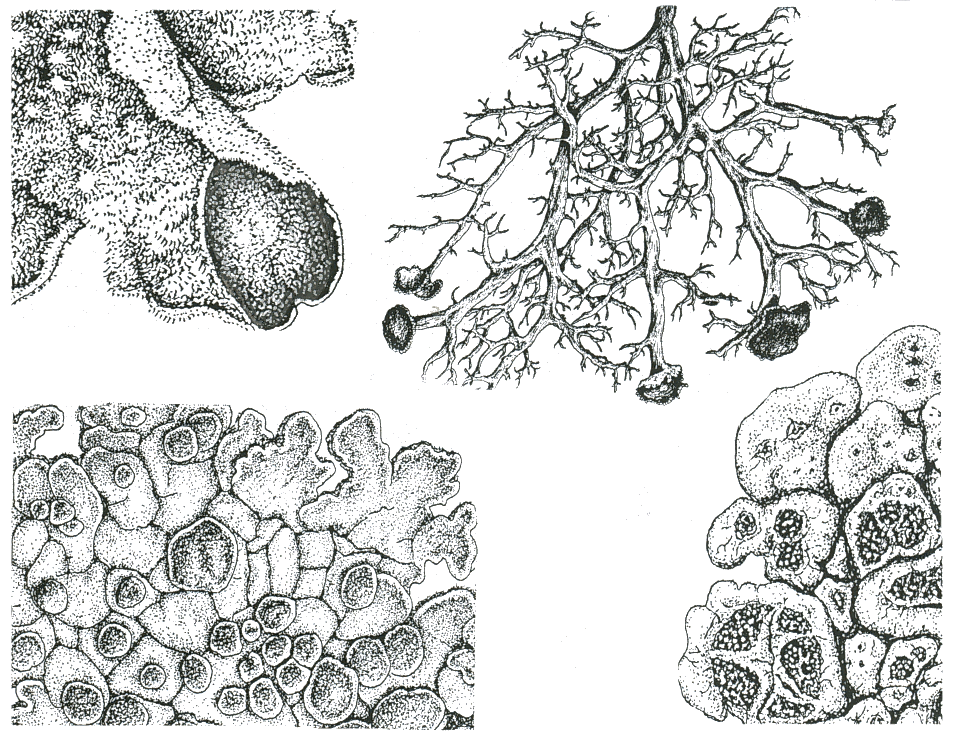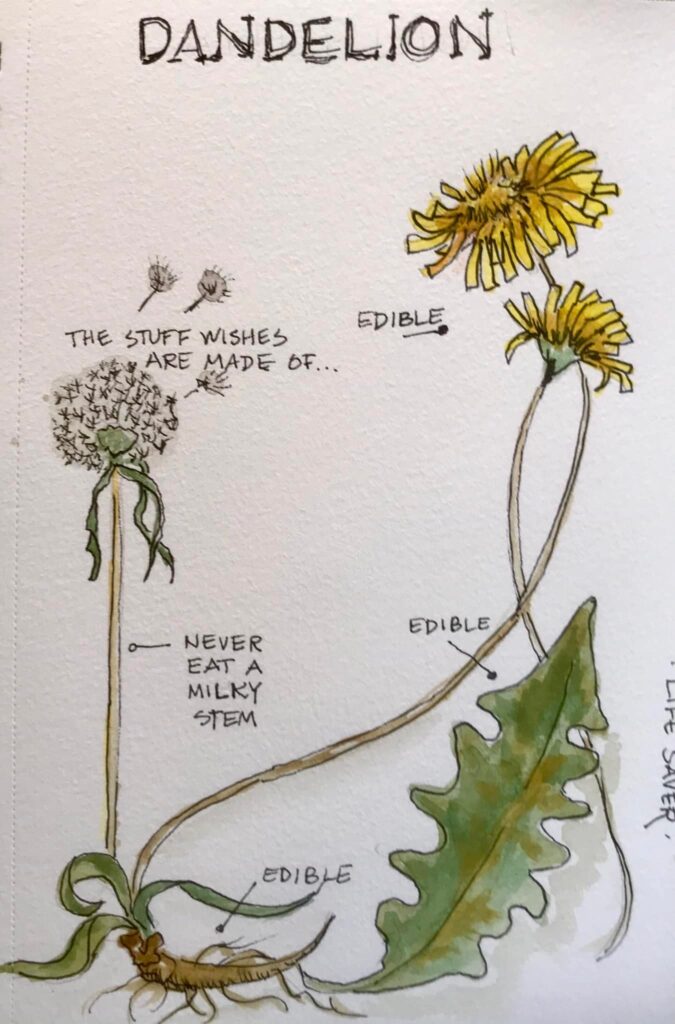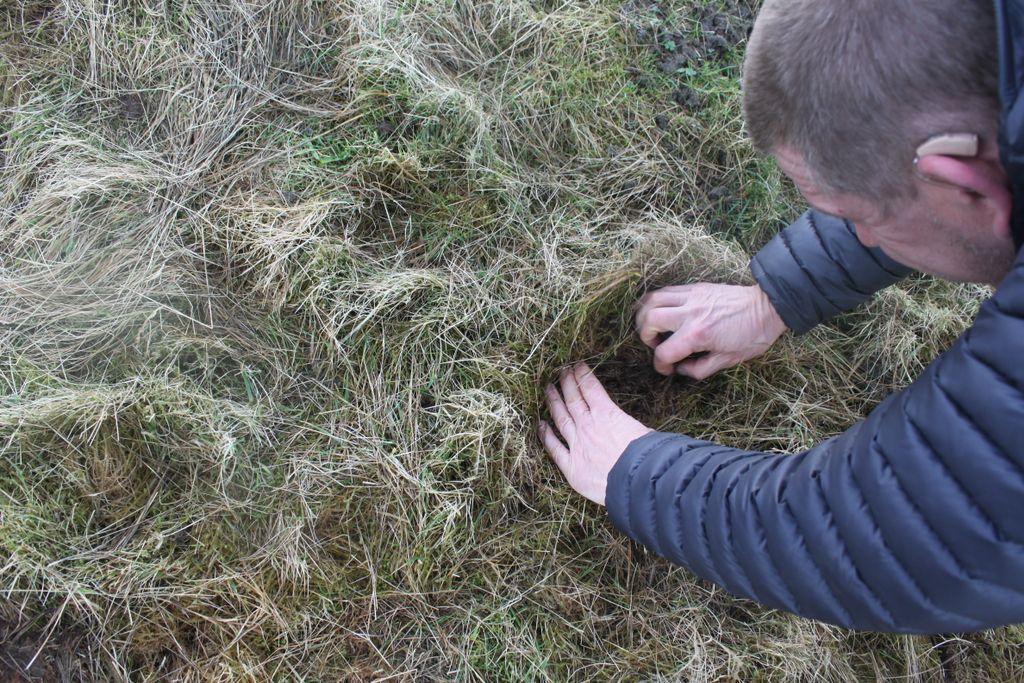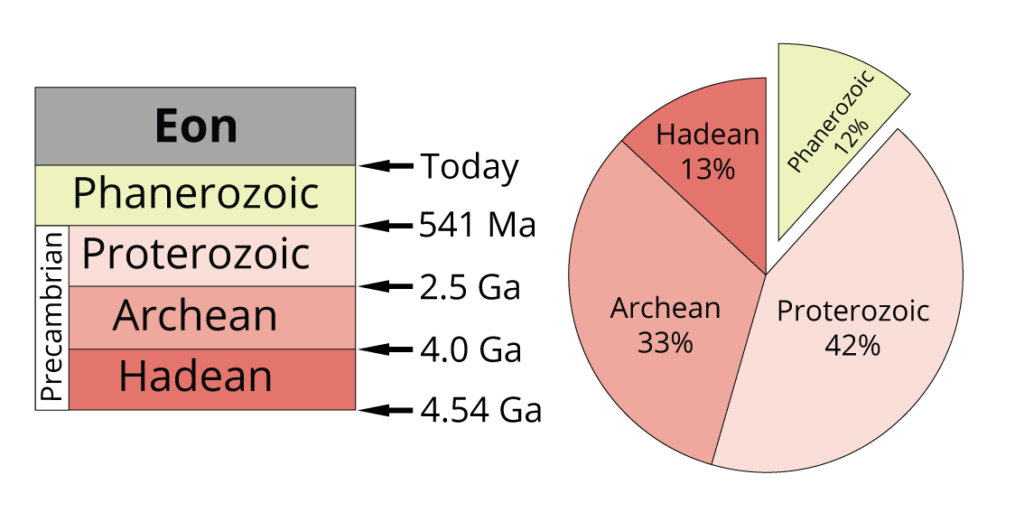Ideas for activities for schools
Dolydd Gobaith welcomes schools and educational visitors, who may engage in a range of activities and learning opportunities. We commence by writings things down and to better visualize the experience and outcomes we are offering. This is a very early attempt to summarize the proejct for a potential educational visitor. I imagine there being a few pages to this, each one a potential activity a school or group could do as part of a visit. These are words which might go on the front page and hopefully create interest in the project.
An essential and central idea of how to approach understanding the natural world is the realization that everything is in someone connected to everything else, or that the conditions required for life on earth have been built by that very same life on earth. The DNA in our genes, the atmosphere we are able to breath, the food and water we depend upon have in some way been generated by life itself. This realisation confronts us with the fact that the economic paradigm that encourages to see the natural world as a pile of available resources for exploitation is the very same one which is driving us to dismantle the biological systems on which we all depend.
To escape this rapidly approaching dead end, generated entirely by a failure in our collective imagination the only approach would be what some call a renaissance in our understanding of our relationship with the natural world. Where we live in an active and productive partnership with all species we share this global ecosystem with.
The activities and ideas which will be contained within this work explore our relationships with both each other, the natural world and the resources we reply on meet our daily needs, with a view to developing more harmonious relationships all around
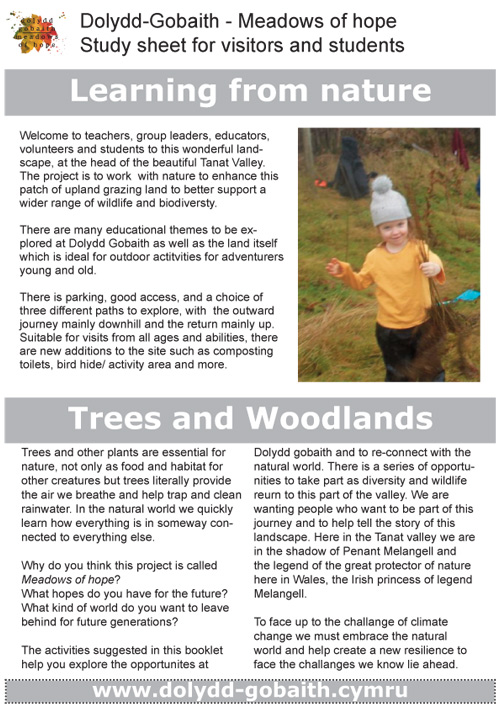
Resources for teachers and community leaders, ways to talk and think about the environment, in a practical way
State of nature report
In 2013 Welsh Naturalist and local resident Iolo Williams made this address to the Welsh Assembly as part of his contribution to the State Of Nature report. This is his colloquial memory of the hills and streams and the nature teamed in them from his own childhood in Llanwddyn a few short decades ago. Choosing some deliberately emotive words Iolo paints a picture of the rapid retreat of wildlife and biodiversity from this area whilst throwing down the gauntlet for ministers, community leaders and everyone of us to respond to this crisis.
This 16 minute video serves an an excellent background as to the inspiration behind Dolydd Gobaith and underlines our commitment to finding ways the Welsh countryside can remain productive, create the employment needed for these communities to flourish, whilst creating more space and niches for natures to survive and thrive.
We know the natural world is in crisis and the climate emergency serves to make this worse, but there are measures to be taken and all is not yet lot. What is becoming clearer every day is that it will be down to all of us to re-forge our relationship with the natural world, in a way that benefits all the creatures who we share this wonderful planet with.
Evolution, life on Earth has always been changing
This 18 minute video crams in a lot of evolutionary history, it is a bit condensed maybe but an excellent reminder of how we got here. Our planet is a living system and constantly changing, we are still only learning how we can live in a partnership with it, rather than consume life on earth to satisfy our economic model.
Lets talk about time
The Earth is 4.5 billion years old, give or take. Life came about relatively early on, and those approx 540 billion years when the planet was a lifeless hot smoking ball is called the Hadean Eon. 13% of the life of earth there was no one here.
The Archean eon came next, taking up a third of evolutionary time, now was a weird period. All first early forms of life were microscopic, there was no oxygen, things were really different. Think of life as a film of bacteria in shallow arm seas, in an otherwise batter world.
The first and most extreme mass extinction happened on the cusp of the Proterozoic Eon, when oxygen produced by early organisms such as stromatalites stopped reacting with the minerals in the sea and starting escaping in to the atmosphere, turning the world aerobic and wiping nearly all of the life which had preceded it.
It is only in the most recent 540 million years that life started to look like something we might recognize and be able to see and interact with. It is relatively recently that there has been multi-cellular life and we are the product of this remarkable chain of events. Life on earth today is the product of all that has preceded it, life is created by life itself an this is an important observation.
We are a product of the Phanerozoic eon, this is when really started to get interesting, when an oxygen rich atmosphere allowed of complex life forms, it allowed combustion, a rapid release of energy that made things like dinosaurs possible.
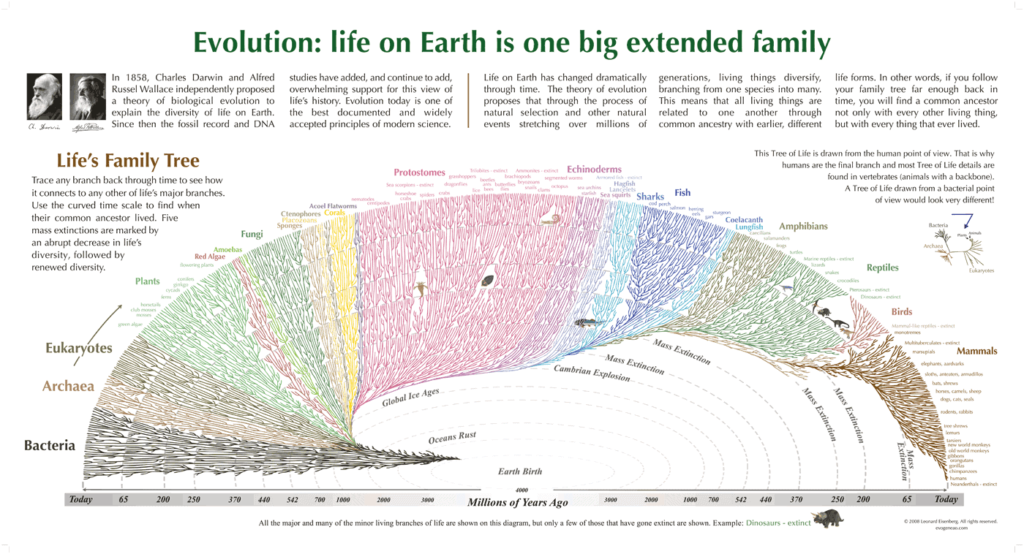
Observing nature – the first lesson is observation!
It can be easy to fail to appreciate the familiar, to take the ground beneath our feet for granted, but we hope you are already beginning to appreciate that every detail of the natural world is potentially fascinating.
